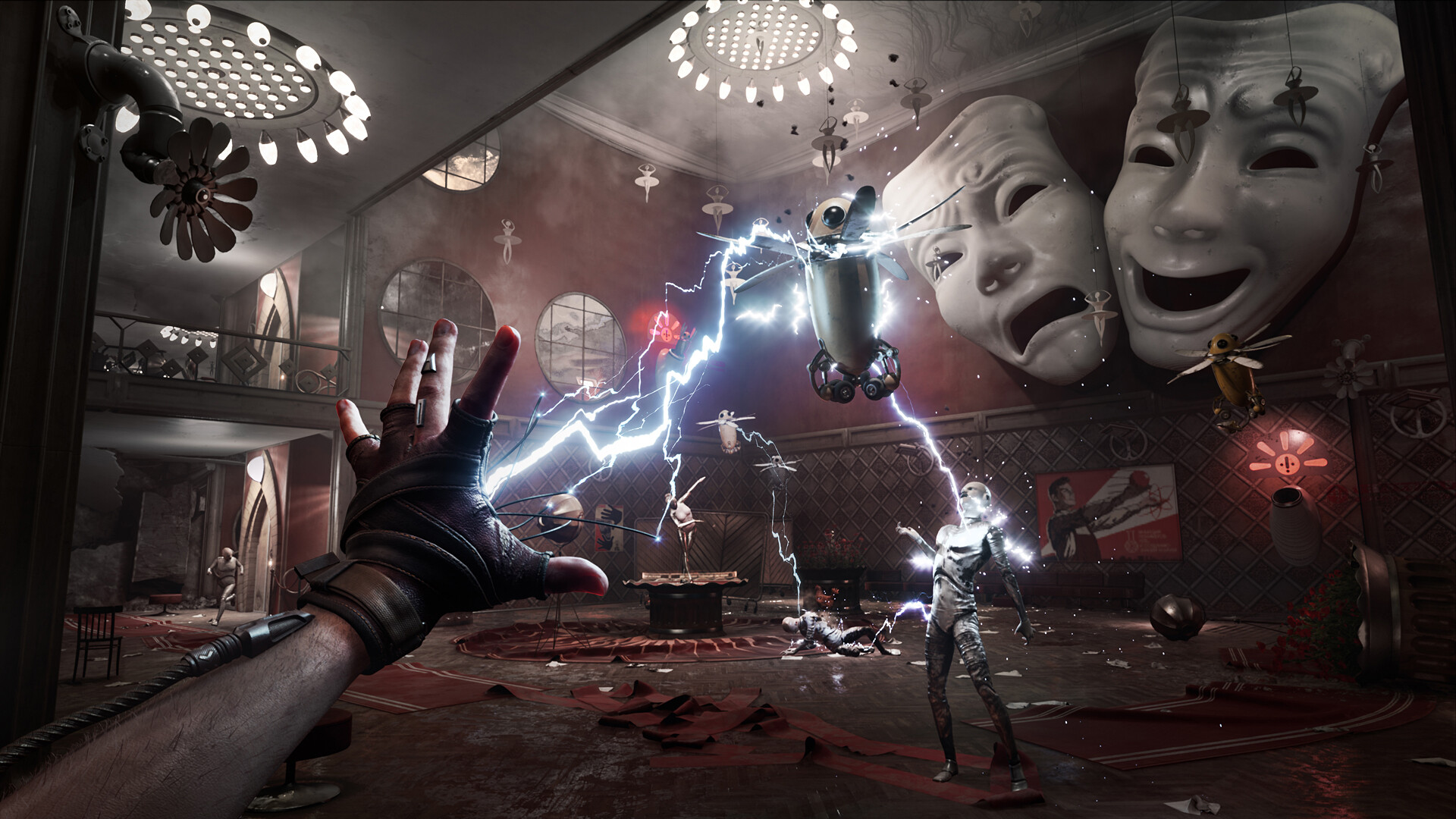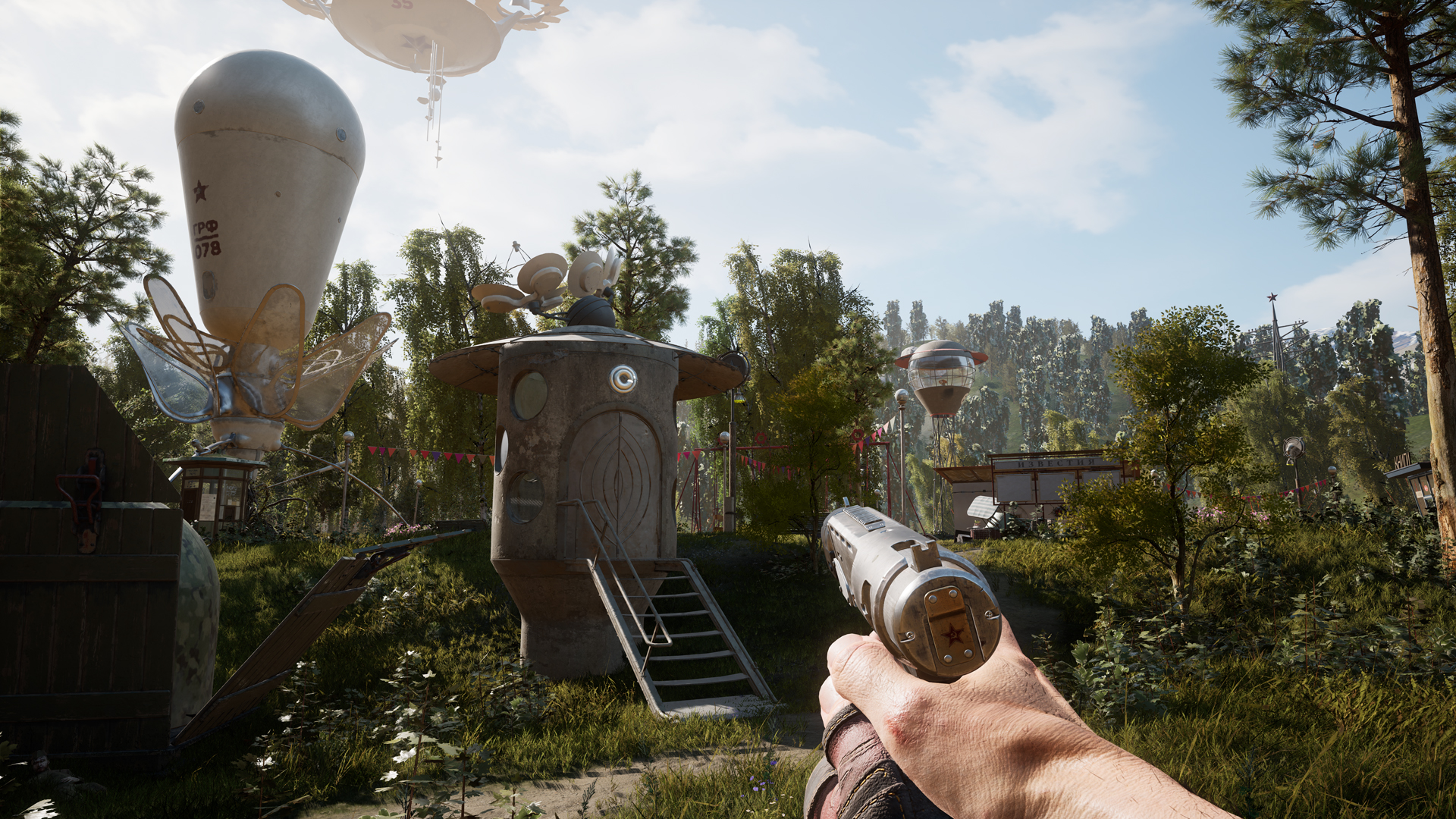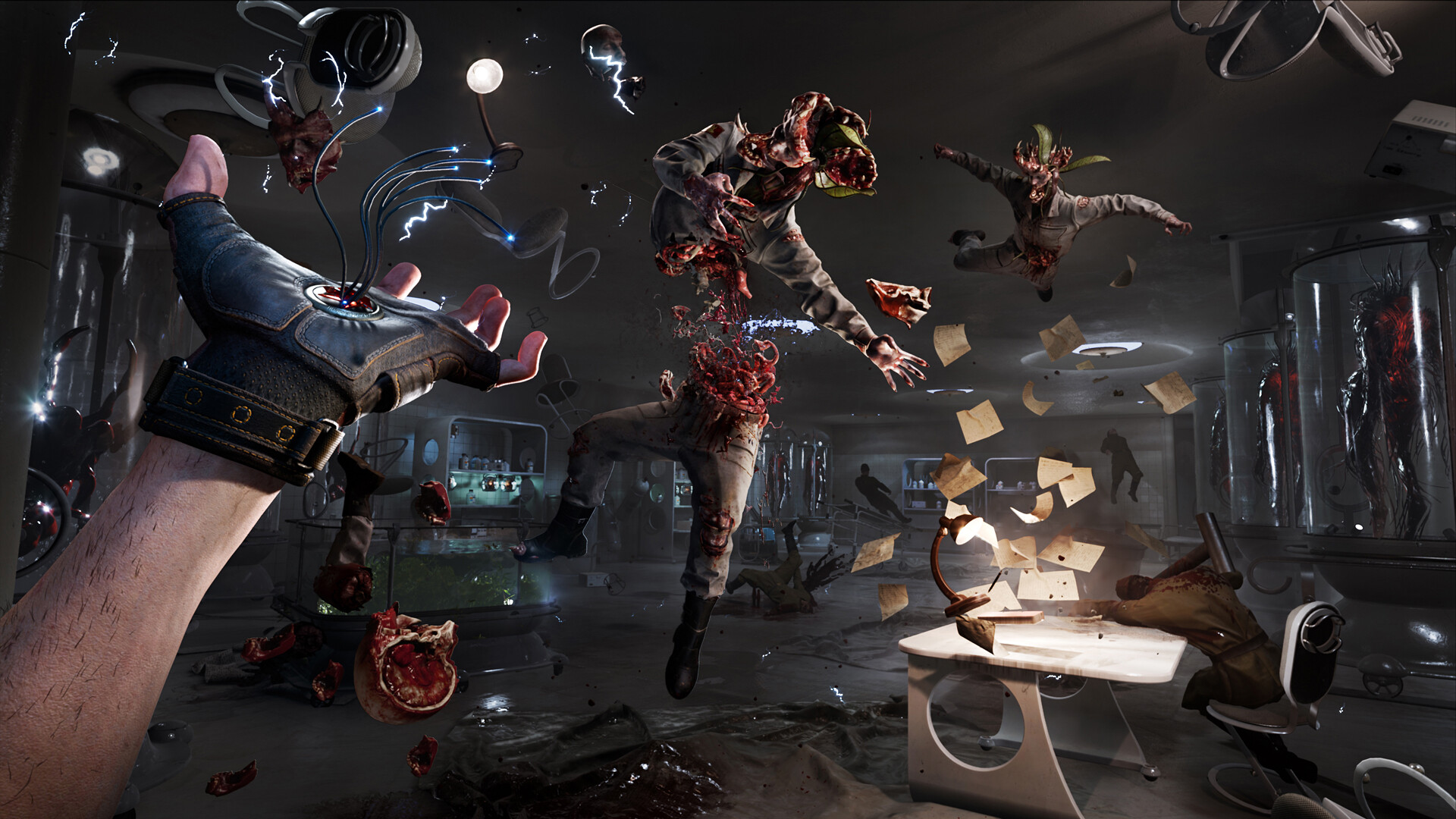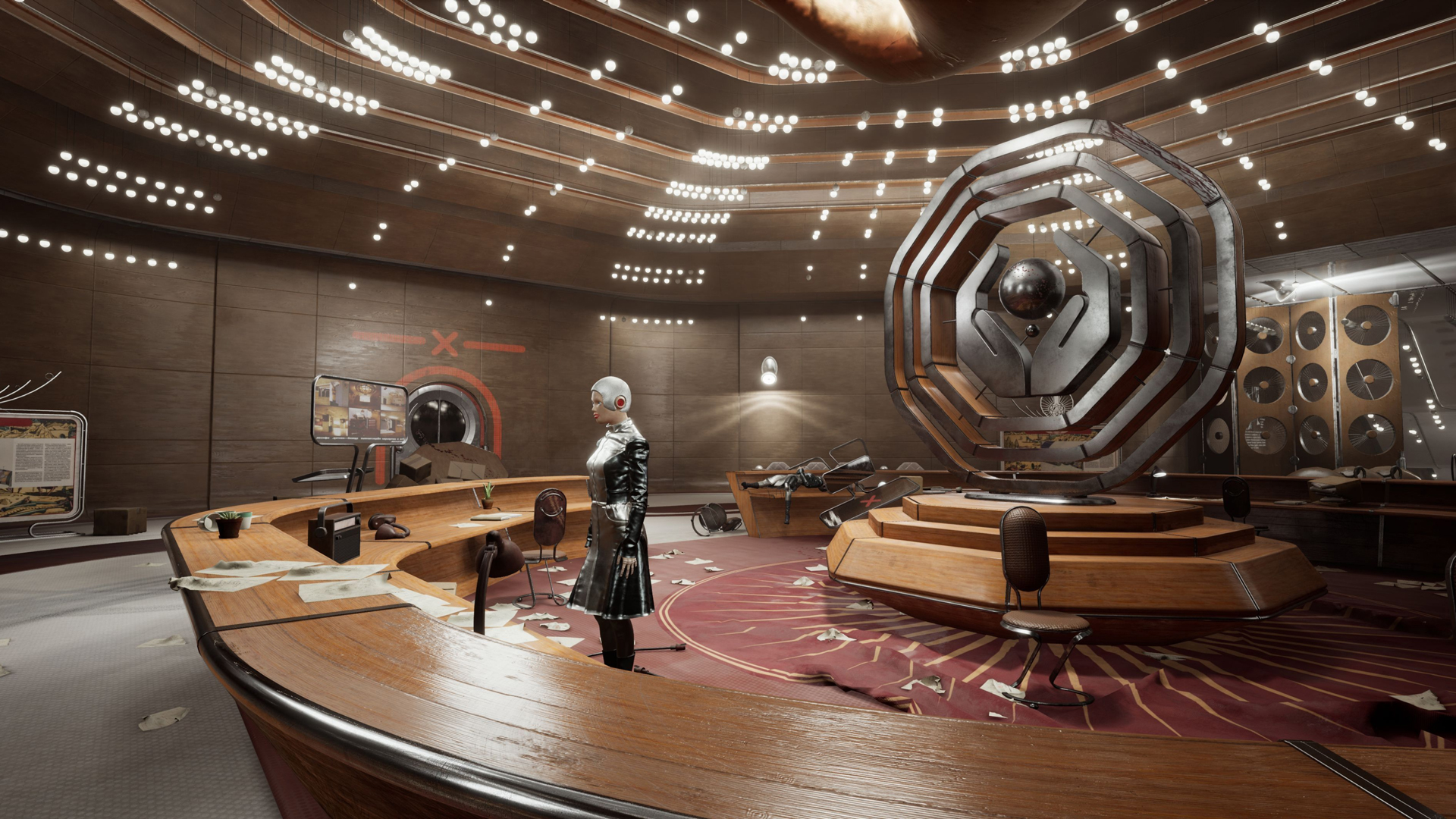No, Atomic Heart isn't a Soviet-set BioShock
You can learn a lot about a video game by what you can find in its bathrooms, and Atomic Heart is no exception. Let's look at a few notable examples. In Duke Nukem 3D you're afforded the opportunity to take a leak at a urinal, admire your physique in the mirror, and pry open a stall door to catch an assault trooper sitting with their armor down by their ankles; it's a reflection of the infantile humor at the heart of the shooter.
One of the first things you're able to do in Prey is visit Morgan Yu's en-suite, jump in the shower and rifle through the bathroom cabinets; an early indication that Talos I is a fully simulated space. In Deus Ex, JC Denton is admonished for attempting to enter a women's bathroom; this is a subconscious signal that the characters inhabiting this world are not only tracking your actions but capable of responding to them in real-time. Then there's BioShock, which uses its porcelain palaces to explore micronarratives that don't push the central plot forward; between discovered bodies and discarded hypo syringes you understand that stories can be found in every corner of Rapture if you're willing to look for them.
Atomic Heart lacks this texture. The toilets of Facility 38-26 won't flush. The taps don't work. The lights are always on, and the mirrors don't reflect protagonist P-3 back out into the world – he's an apparition wielding makeshift weaponry. Occasionally, a haywire humanoid will burst forth from a bathroom stall to engineer a sharp jump scare, and push you into catastrophically stiff close-quarters combat. If all this says anything about developer Mundfish's upcoming FPS it's this: No, Atomic Heart isn't the Soviet-set BioShock that the trailers suggested it could be.

"My four hours with Atomic Heart were a stark example of expectation clashing against reality"
In that sense, my four hours of playtime with Atomic Heart were a stark example of expectation clashing against reality. Mundfish shows little interest in fully simulating its linear spaces to heighten world immersion. You can't smash through windows, circumvent doors sealed shut with colored tape, or engineer intuitive approaches to mission objectives. Mundfish has defined a clear critical path, and you damn sure better follow it.
When Atomic Heart does branch into more open-ended areas, spaces to explore as you're awaiting assignment from genius scientist Dmitry Sechenov, there's little to see beyond shooting galleries of organic and robotic enemy variants; Test Sites provide some respite, with these small puzzle boxes distracting from a distinct lack of environmental storytelling in these walled valleys. Polymer powers let you control the elements, though they don't appear to combine as fluidly as BioShock's Plasmids. Consider this an expectation reset, then, because there's plenty to Atomic Heart that does show promise.
A world worth exploring

Atomic Heart cut through my disdain for boss battles in first-person shooters. Typically, the second I see an unfamiliar health bar unfurl across the screen my heart sinks as I prepare to outflank unwieldy attack patterns, hunt for glowy weak points, and sacrifice my hard-earned ammunition at the altar of the Almighty Bullet Sponge that stands before me. But hot damn did Atomic Heart get my adrenaline flowing. Trapped in a circular area with what is essentially an Omnidroid from The Incredibles, the ensuing battle pushed me to fight frantically to survive – and I loved every minute of it.
The enemy is relentless. Chewing up the environment as it encircles me, kicking dirt and debris up into the air as I'm attempting to desperately reload an otherwise chattering Kalashnikov rifle. A burst of frost from the Polymer Glove here, a crackle of electricity from the Railgun there. Jump twice to avoid the fire rings burning through the air, whisper profanities as I accidentally consume my last Neuromed capsule while searching for the dodge button. It's enthralling, visually all-consuming, and speaks to the power of Atomic Heart when it's firing on all cylinders.
It doesn't hurt that the game looks freaking phenomenal too. There's a spectacle to the boss battle that's difficult to ignore, something which is reflected all throughout Atomic Heart's presentation. Set in the Soviet Union on an alternative timeline, where Russia emerges from World War 2 victorious, using its standing on the world stage to invest in advanced robotics and a collective consciousness. Environments are dense with elaborate detail, which Mundfish uses to sell the concept with ease. An introductory hour, which has me navigating a fortress in the sky, immediately ignites the imagination. This is a world that you'll want to spend time in, even if I did lament the lack of agency I had while doing so.

One question that I haven't been able to shake from my mind is whether Atomic Heart will afford us the opportunity to explore its spaces without an ever-present threat of laboring melee combat. Through the earliest hours of the game, where I descend into a Soviet research facility in search of a rogue scientist, there's a considerable focus on swinging hatchets and axes – ammunition is scarce, which is a shame because the shotgun and assault rifles I was able to sample are fun to wield. I found melee combat to be slow and ponderous, a gradual trading of light and heavy attacks in sequence with an aggressor until one of our bodies hit the floor.
The closest analogue I can draw is to imagine a less intuitive version of the melee combat system present in something like Dying Light 2. This aspect of Atomic Heart really suffers in close-quarters, where enemies can push you against a wall or between elements of an environment – if you're unable to enact a dodge away from lumbering attacks, or charge a heavy attack sufficient to stagger your foe, there's little you can do but wait for death. And given that the checkpointing in Atomic Heart leaves little to be desired, it did drag the pace of missions to a crawl. Techland's action game also came to mind during lengthy navigational puzzles, where I was pushed to clamber between ledges and platforms to progress – these sections weren't bad, but there's a slight stickiness to movement in Atomic Heart that makes these areas less appealing than they would be in something like a Dying Light 2 or Half-Life 2.
To be fair to Atomic Heart, there's a chance that melee encounters will become more fun over time. There's a great array of weapons to craft (should you come across the relevant recipes), and each comes equipped with imaginative effects – a club that fires off whirling saw blades in lieu of a heavy attack presented spectacle, particularly as I notice the blades visually slashing through the chassis of malfunctioning androids and into the bone of humans infected with mysterious spores. There's also a wide array of upgrades available, allowing you to expand damage modifiers or add elemental effects to your equipment, should you have the resources necessary – gained from dutifully scavenging offices and corpses.
Power to the people

It's worth focusing on the Weapons Vendor for a second – a malfunctioning vending machine with a sultry robotic voice. This speaks most clearly to Atomic Heart's disparate tone and uneven writing, as Mundfish tries to juggle heady sci-fi concepts and an intriguing alternate history timeline with Wolfenstein 2: The New Colossus-style humor. The vendor is so audibly horny for both my resources and my attention that I was glad to be wearing headphones – if you live in a shared house or with your parents, expect to have some uncomfortable conversations should you make any attempt to craft consumables or upgrade the Polymer Glove.
You will want to upgrade that glove too, because wielding the powers is certainly entertaining. I'm excited to see how this aspect of the game will expand, with abilities such as Shok, Frostbite, Polymer Throw, Polymeric Shield, and Telekinesis each having sizeable skill trees to invest in alongside standard character attributes. These combine well enough, particularly when using Telekinesis to raise multiple threats off the ground – again, another hugely satisfying visual spectacle – and pump what little ammunition I have left into their floating bodies. However, even after jumping hours ahead to sample a larger pool of unlocks, I didn't necessarily see all that much potential in the powers combining as fluidly with each other or environmental hazards – at least when compared to the standard-setting BioShock.
Atomic Heart wasn't what I was expecting it to be, but that isn't necessarily a bad thing. It may have the look of a video game infused with immersive sim DNA, but it's more of a traditional first-person shooter – something which could have emerged from MachineGames or id Software, albeit without the polish those studios are known for delivering. The first four hours of Atomic Heart definitely have my attention, and I'm keen to see how the final game will come together.
Atomic Heart is one of the most anticipated new games of 2023, and is set to release on February 21 for PC, PS5, PS4, Xbox Series X, and Xbox One. While you wait, check out the best FPS games that are still worth playing today.

No comments